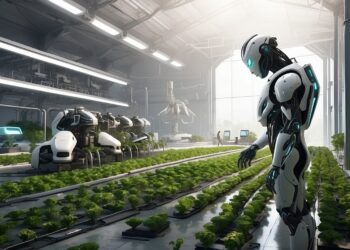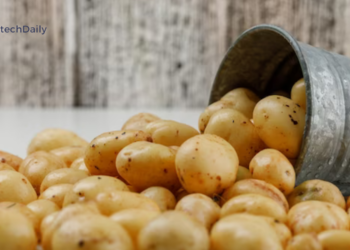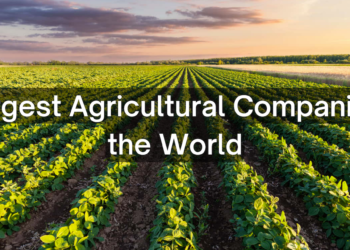This article explores the future of food production and distribution, examining the technological innovations and shifts in consumer behavior that are changing the way we produce and distribute food. From vertical farming and precision agriculture to online grocery shopping and delivery services, the article explores how these trends will shape the future of food and agriculture.
The world is changing rapidly, and the way we produce and distribute food is changing with it. As our population grows, the demand for food increases, and the global food industry faces unprecedented challenges.
Climate change, declining natural resources, and shifting consumer preferences are just some of the factors that are reshaping the food production and distribution landscape. In this article, we explore the future of food production and distribution, focusing on the technological innovations and trends that are shaping the industry.
The Rise of Precision Agriculture

Precision agriculture, or the use of technology to optimize crop production, is one of the most significant technological advancements in recent years. With the help of data analytics and the Internet of Things (IoT), farmers can now monitor their crops’ health, growth, and yield more accurately than ever before. By using precision agriculture techniques such as soil sensors, drones, and satellite imagery, farmers can improve crop yields, reduce waste, and increase profitability.
Vertical Farming
Vertical farming is another technological innovation that is changing the face of agriculture. By growing crops in vertically stacked layers using artificial light and climate control systems, vertical farms can produce large quantities of crops in small spaces. This method of farming has the potential to revolutionize food production, particularly in urban areas where space is limited.
The Role of Biotechnology
Biotechnology has been a game-changer in the agriculture industry, and its importance is only set to increase in the future. Advances in biotechnology are enabling farmers to produce crops that are more resistant to pests and diseases, more tolerant of extreme weather conditions, and more nutritious. In the future, we can expect to see even more innovative uses of biotechnology in food production, such as gene editing and the use of synthetic biology.
Changing Consumer Preferences
The way we consume food is also changing, driven in part by changing consumer preferences. Today’s consumers are more health-conscious and environmentally aware, and they demand more transparency in the food production process. As a result, we are seeing a shift towards plant-based diets, organic and sustainably produced food, and locally sourced ingredients.
Online Grocery Shopping and Delivery
The rise of e-commerce and the COVID-19 pandemic have accelerated the shift toward online grocery shopping and delivery. Online grocery shopping has become more popular than ever before, with consumers opting for the convenience and safety of home delivery. This trend is set to continue in the future, with online grocery sales projected to reach $250 billion by 2025.
The Importance of Food Safety
Food safety has always been a top priority in the food industry, but in the future, it will become even more critical. As food production becomes more complex and distributed, ensuring the safety and quality of food will require new approaches to monitoring and regulation.
Technologies such as blockchain and the Internet of Things (IoT) will play a vital role in tracking and tracing the source of food products, reducing the risk of foodborne illnesses and contamination.
The Need for Sustainability
Sustainability is a critical issue in the food industry, and it will only become more important in the future. As the population grows and natural resources decline, it is essential to find ways to produce and distribute food sustainably. This will require a focus on reducing waste, promoting regenerative agriculture, and developing new technologies to improve efficiency and reduce environmental impact.
The Role of Automation
Automation is already playing a significant role in the food industry, with robots and other automated systems used for tasks such as harvesting, packing, and quality control. In the future, we
can expect to see even more widespread use of automation in food production and distribution. This will help to reduce costs, improve efficiency, and increase safety and quality. For example, autonomous tractors and harvesters will make farming more efficient, while automated warehousing and logistics will enable faster and more efficient food distribution.
Innovation in Food Packaging
Food packaging is another area where we are likely to see significant innovation in the future. New packaging materials and technologies will enable food to be stored and transported more safely and efficiently, while also reducing waste and environmental impact. Biodegradable and compostable packaging, for example, can help to reduce plastic waste and make the food industry more sustainable.
The Rise of Smart Kitchens

Smart kitchens, equipped with connected appliances and devices, are already becoming more common in households around the world. In the future, we can expect to see even more widespread use of smart kitchen technology, enabling consumers to prepare food more efficiently, safely, and healthily.
Smart appliances such as ovens, refrigerators, and cooking systems can be connected to the internet and controlled remotely, making it easier than ever to cook healthy and delicious meals.
Conclusion
The future of food production and distribution is rapidly evolving, with new technologies and trends shaping the industry. From precision agriculture and vertical farming to online grocery shopping and delivery, the food industry is being transformed by innovative technologies and changing consumer preferences.
The rise of sustainability and the increasing importance of food safety will require new approaches to monitoring and regulation, while automation and smart technologies will help to reduce costs, improve efficiency, and increase safety and quality. The future of food is exciting and full of possibilities, and we are only just beginning to see what the future will hold.













